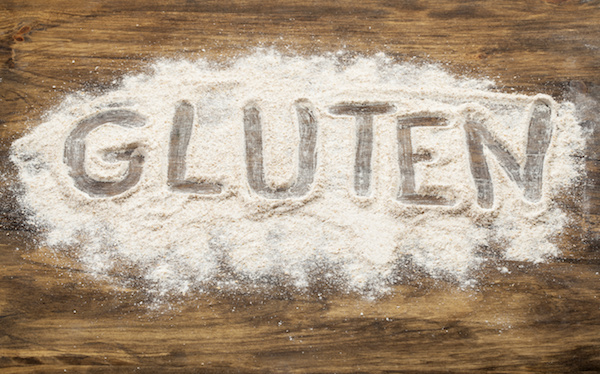
by Susan Cable
According to the market research firm Packaged Facts, gluten-free products are estimated to be a $6.6 billion dollar market by the year 2017. For the celiac population, this is very exciting. It means more products, more meal variety, and less of a struggle when preparing meals. What I question is, why, when only one per cent of the population worldwide suffers from celiac disease, has this become such an enormous market?
First of all, let’s talk gluten. What exactly is gluten? Gluten is a combination of two proteins found in wheat, rye and barley and some cross-breads. It is the substance which gives dough its binding and elasticity effects. It is also found in many processed and packaged foods. It is the matter which will have detrimental effects on individuals with celiac disease.
Celiac disease is an autoimmune disorder which involves the small intestines. Symptoms of celiac disease are malabsorption, diarrhea, steatorrhea (excess fat in the stool), weight loss, anemia and stunted growth in children. Gas, bloating and stomach distension often occur in many individuals. Individuals with this disorder should avoid gluten at all times, as even the slightest amount can cause serious consequences. There is a lot of media today making gluten out to be the “bad guy.” On the contrary, gluten on its own does not have any good or bad components. Many people are choosing to take on a gluten-free diet, and as a nutritionist, I find this bothersome.The nutrients found in glutinous grains are so valuable, and it’s a shame people are missing out on these whole foods. It’s also a shame individuals are going gluten-free simply because of what they read. I will be the first one to tell a client they will likely feel better if they take gluten out of their diet, but I will also be the first one to recommend that they explore other options first. While there are no diagnostic tests to establish non- celiac gluten sensitivity, some practitioners do perform a blood, saliva or stool test, but these tests are not FDA-approved.
The best way to determine if gluten truly is the culprit is to work with a holistic nutritionist who will put together an individualized elimination diet based on your nutritional assessment and lifestyle. This type of diet can last anywhere from four weeks to three months, depending on how your body reacts.All common food allergens will be removed from your diet for a determined time.After that time period, one food at a time will be reintroduced back into your diet every three days. If you react to that food, it will then be taken out of your diet again and reintroduced at a much later time. This method is very effective in determining food sensitivities and is used by many alternative health-practitioners.
Gluten sensitivity is not as common as people may think.
Gluten sensitivities are real, but not as often as people think. If you take this substance out of your diet, you will also take out many nutrients, such as fibre, B vitamins and antioxidants. Barley, for example, may help prevent heart disease and colon cancer due to its high fibre content (both soluble and insoluble). It is one of the best grains for an individual with dia- betes, as it has a low glycemic index. Studies have also shown barley can help reduce the risk of post- menopausal breast cancer and help to prevent gall- stones. It is high in lignans, selenium, and many other cancer-preventative nutrients.
Rye is right up there with the great health benefits of barley. Rye also helps with weight loss, as it gives you a feeling of fullness.
Wheat and its varieties, if eaten in a state as close to the way Mother Nature created it, has many of the same health benefits of rye and barley,only not as nutrient-rich. Unfortunately, whole wheat grains are often over-processed, therefore losing much of the bran, fibre, vitamins and minerals.
As you can see, there is much to be said for the benefits of consuming gluten-rich foods. Many are led to believe that eating a gluten-free diet is healthier. Like any diet, it must be done properly under the guid- ance of a trained professional, otherwise it may be lacking in balance. Many of the gluten-free products available today are high in sugars, dairy, and refined white grains, such as rice and tapioca. This diet will be restrictive and you must become well-educated, as gluten is used in many pre-packaged foods as a binder. So in other words, you become label literate if you truly want to eliminate all gluten from your diet. Eating out can be challenging, as gluten-free menus are just starting to become available.

New research suggests individuals who appear to suffer from non-celiac gluten sensitivity may actually have the inability to break down certain carbohydrates (FODMAPs), and this causes the food taken in to ferment in the colon, causing gas, bloating and discomfort. Therefore, it may not be the gluten protein in the food, but may be the fermented carbohydrates (sugars) instead. If this is the case, will it make life easier? Possibly, as there are supplements available to help with digestion and the breakdown of carbohydrates, and there are probiotics available to prevent fermentation.
There are many other scenarios which may cause the symptoms of a gluten sensitivity. These include irritable bowel syndrome, wheat or dairy intolerance, candidiasis, parasites and ulcerative colitis. If you experience any of the symptoms of a gluten sensitivity, please consult with your health-care provider to rule out other serious conditions.
If all is well, then set yourself up with a holistic nutritionist who will work with you to establish the root of the problem.You may be surprised, a couple of digestive enzymes before each meal along with a whole, natural foods diet, may be all you need to achieve your optimal health. n
Susan Cable is a registered holistic nutritionist, educator, competitive body builder and business owner. She is the senior academic advisor for the Canadian School of Natural Nutrition, where she aids in the education of students worldwide in holistic nutrition. She works and lives Hastings, Ontario.



